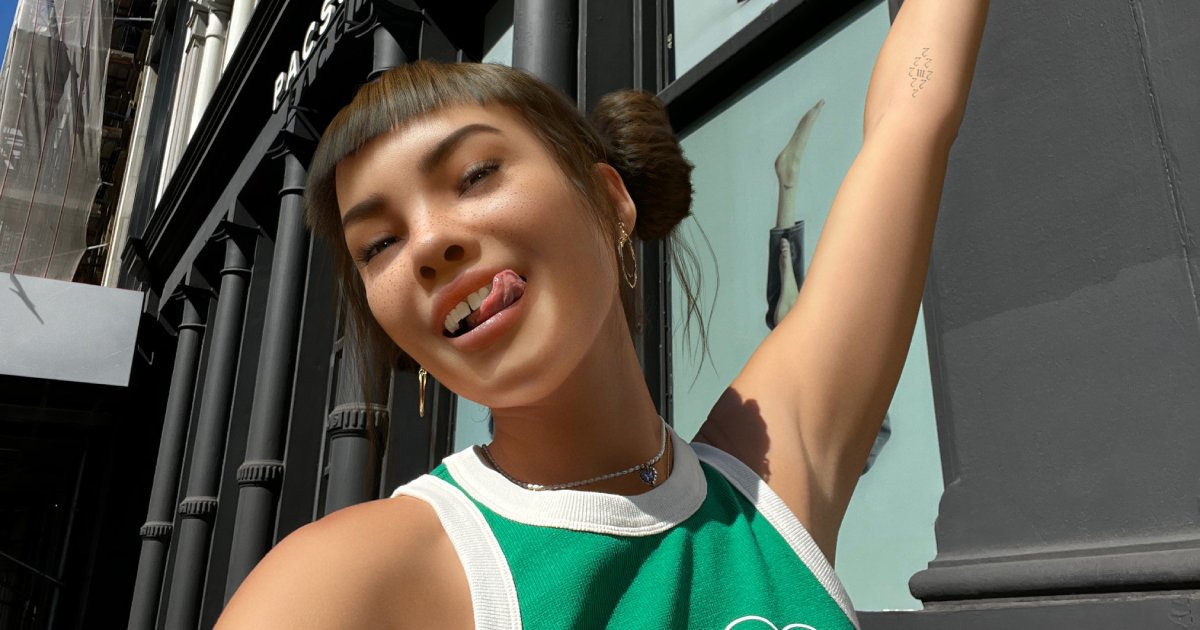Digital Influencers Go Viral

By Mark Seavy
There is a growing set of digital avatars whose influence expands far beyond the online world.
These virtual influencers—whose personas are created through artificial intelligence or computer software and are featured in content across social media platforms—are gaining popularity with major brands like BMW, Balenciaga, Calvin Klein, and Samsung.
While they look like a real person, these avatars are 100% digital. They have the ability to speak, dance, and express opinions that can attract followers. They can also be designed in a range of formats, including 2D (which provides a flat, cartoon version of a digital persona), 3D (which allows for a greater level of detail), or virtual reality (which creates a more immersive experience). There are also full-body avatars that can mimic motions and gestures in real time.
These influencers don’t typically have standard licensing deals with royalties and minimum guarantees. Much like real influencers, the creators of virtual influencers are paid per post or receive something in kind (such as free merchandise). The fees can be paid in installments and contracts detail the platform, number, type, and frequency of posts required.
In addition to being profitable for the influencer, these deals bring brands exposure to new demographics.
In 2003 in Brazil, Lu do Magalu launched as the in-store voice of Magazine Luiza’s eCommerce website. Six years later, Lu moved to YouTube as part of a promotion for iBlog TV. Since then, the virtual influencer—who has 6.6 million Instagram followers—was paid $33,000 for a sponsored post and her business on Instagram in one month alone can generate $2.66 million in fees, according to a study by SAP.com.
Others featured on SAP’s list of top virtual influencers includes Dapper Labs’ Miquela “Lil Miquela” Sousa ($20,828 per post, with 2.7 million followers on YouTube), production company IAMX.Live’s Alara X ($5,842 per post, with 509,238 followers on Instagram), and Magnavem Studio’s Thalasya Pov ($5,334 per post, with 461,000 followers on Instagram).
“These may well be the future for marketing as they carry less cost and there is less chance of issues with a digital avatar, given the controversies that have cropped up around real-world social media stars,” a licensing executive said. “That said, it is still relatively early days and whether these avatars can have the same hold on consumers as a real person remains to be seen.”
The test case for these avatars may well be the Metaverse, where virtual brands, collections, and stores are cropping up across platforms like Roblox, Decentraland, and Sandbox.
Many of those brands are being shepherded into the Metaverse by companies like Virtual Brand Group, which helped set up a Forever 21 shop in Roblox. Forever 21 then launched a real-life collection of t-shirts and hoodies culled from its assortment of virtual apparel. Virtual Brand Group also brought ITV’s The Voice from a Roblox outpost into a fashion collection late last year, which meshed fashion styles with music from the singing competition show.
The Metaverse and virtual avatars are especially compelling for Gen Z consumers. About 25% of Gen Zers polled by Roblox said they cared more about their digital fashion than they did their real-world wardrobes. And more than 70% of Gen Z consumers in the same study said their digital avatars influence their outfits in real life.
“We’re now at the point where, rather than designing our avatars to look like ourselves in the real world, we’re designing our real-world selves to look like what we would look like in the Metaverse,” Jon Reily, SVP of Commerce at IT services company Bounteous, told Marketscale.




